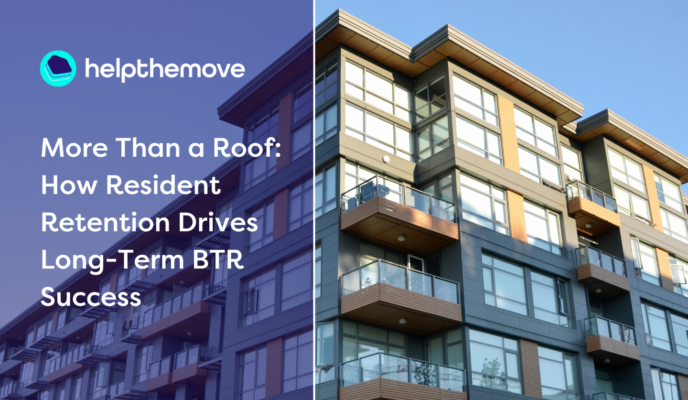The Future of Build to Rent: Key Trends Reshaping the Sector
The Build to Rent sector isn’t just growing—it’s booming. In the UK alone, the BTR pipeline has surpassed 242,000 homes, with completed developments rising 12% year-on-year. With demand soaring and competition heating up, investors, operators, and developers need to stay ahead of the curve. Let’s dive into the biggest trends reshaping the Build-to-Rent sector and how you can get ahead.
Operational Efficiency: Smarter, Leaner, More Profitable
With more players in the market, operational efficiency is what separates the best from the rest. The smartest Build-to-Rent operators are using tech to slash costs and boost profits. AI-driven maintenance, digital leasing platforms, and smart building management systems are streamlining operations and keeping void periods to a minimum.
According to Knight Frank, BTR schemes that integrate tech solutions see 20-30% lower operating costs than traditionally managed rental stock. Automated lease renewals, AI-led pricing strategies, and resident engagement tools aren’t just nice-to-haves—they’re essential for maximising net operating income.
Beyond Amenities: It’s All About Service
A flashy gym and a swanky rooftop are great, but they’re not enough to win over today’s renters. What really sets a BTR scheme apart is service. Think hospitality-level customer care—concierge services, 24/7 maintenance, and community engagement programmes that make residents feel truly at home.
Data backs this up. HomeViews found that customer service and responsiveness are the top factors influencing resident satisfaction—ranking even higher than location or price. That’s why leading operators are focusing on building communities, not just properties, by investing in on-site teams and real-time feedback systems.
Affordability & Suburban Expansion: BTR Moves Beyond City Centres
BTR was once all about luxury high-rise apartments in prime city locations like London, Manchester, and Birmingham. But as affordability pressures mount and remote work reshapes living preferences, renters are looking further afield.
Savills reports that 65% of renters in the UK now prefer homes outside major city centres, driving rapid growth in suburban and single-family properties. Developments like Legal & General’s suburban BTR portfolio are attracting families and remote workers who want more space without compromising on quality. These schemes—often featuring new build houses for rent—are seeing lease-up rates 30% higher than traditional city-centre flats.
Sustainability: From Compliance to Competitive Edge
Sustainability isn’t just a buzzword—it’s becoming a necessity. With Minimum Energy Efficiency Standards (MEES) tightening in 2025, investors are prioritising energy-efficient, eco-friendly developments to stay compliant and attract eco-conscious renters.
The best BTR schemes are leading the charge with net-zero carbon goals, smart energy management, and circular economy principles. Take Greystar’s Greenford Quay and Quintain Living’s Wembley Park—both feature 100% renewable energy and on-site recycling hubs. And it pays off: CBRE reports that “green-certified buildings command an 8-10% rental premium and 5-7% higher occupancy rates.”
Institutional Capital and Market Consolidation: Bigger Players, Bigger Moves
The UK’s Build-to-Rent sector is maturing fast, and as it does, the big fish are swallowing the small ones. Institutional investors now dominate 80% of the market, and the top 10 operators control more than 50% of the UK’s stock. Expect more mergers and acquisitions as smaller players struggle to compete.
Despite economic uncertainty, BTR is still a hot investment. £4.7 billion was pumped into the UK sector in 2023, and the pipeline for 2025 is looking strong. Just look at Blackstone’s £1 billion investment – it’s clear that institutional confidence in long-term rental demand remains high.
The New Jackson Development: A Game-Changer for Manchester
One of the most ambitious projects on the horizon is The New Jackson Development in Deansgate, Manchester. Planned to house around 30,000 people, this development is set to be a self-contained vertical community, the size of a small town. With a mix of high-rise apartments, retail spaces, and shared amenities, the scheme is designed to cater to the evolving needs of modern renters.
As one of the largest BTR projects in the UK, The New Jackson Development is expected to significantly impact Manchester’s rental market, further solidifying the city’s reputation as a build to rent hotspot. With such large-scale projects on the rise, the future of urban development is moving towards fully integrated, live-work-play environments that offer more than just a place to live.
What’s Next?
As the build to rent industry continues to evolve, expect more focus on tech-driven asset management, service-led living, and suburban expansion. Those who get ahead of these trends will enjoy stronger yields, lower voids, and higher tenant retention.
The real question isn’t whether the sector will keep growing—it’s how you can ensure your strategy is built to outperform the market.
What’s your next move in BTR? Find out how we can help.
Source List:
British Property Federation (BPF), 2024
Knight Frank, 2025
Savills, 2025
Statista, 2024
Property Inspect, 2025
Financial Times, 2024



